#central and eastern european architecture
Photo

The National “Khabar” Television Studios And Administrative Offices. Almaty, Kazakhstan, Built In 1983
Revitalizing The Heritage Of Socialist Modernism: BACU’s Online Initiative To Protect Central And Eastern European Architecture
Preserving the monumental yet decaying structures of central and eastern Europe erected between 1955-91 is the mission of the online initiative, Socialist Modernism, created by the Bureau for Art and Urban Research (BACU). With an aim to revitalize this heritage, BACU believes in the significance of these elements which managed to defy some of the ideological requirements of their time, giving the urban space a distinct flavor characteristic of the socialist period.
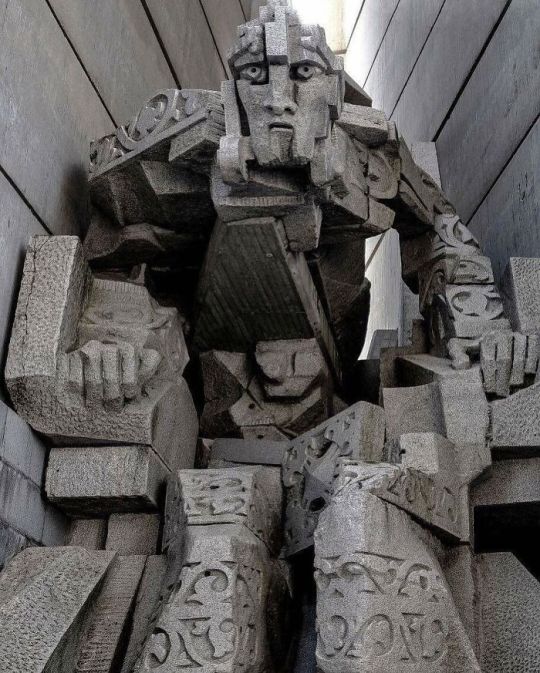
The Monument To 1300 Years Of Bulgaria

Housing Building On Bobur Street. Tashkent, Uzbekistan Built In 1974

Former Ministry Of Transportation, (Now: Bank Of Georgia) Tbilisi, Georgia, Built In 1974
#socialist modernism#bureau for art and urban research (bacu)#heritage#central and eastern european architecture#architecture#history#socialism#national khabar television studios#almaty#kazakhstan#monument to 1300 years#bulgaria#housing building on bobur street#tashkent#uzbekistan#tbilisi#georgia
25 notes
·
View notes
Text
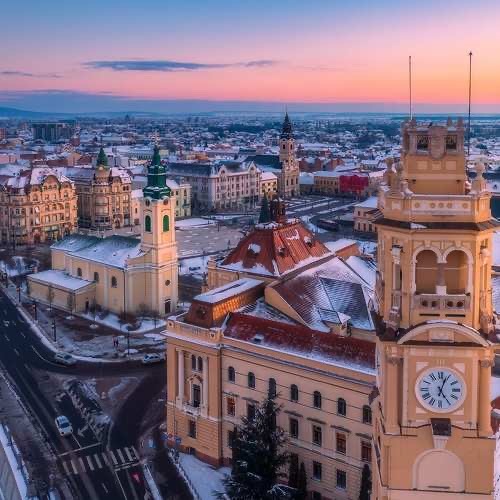


Oradea occupies a special place in the history of European architecture and is one of the Art Nouveau capitals of Europe.
The city developed on the Crişul Repede River, between the West Plains and the Apuseni Mountains, taking advantage of an important trade route linking Western Europe to Central and Eastern Europe. During the late 19th century Oradea witnessed an economic boom, largely due to commerce and financial institutions inside Austria-Hungary.
The most impressive are the Sezession-style buildings, real palaces built around 1900. The originality of their architectural expression is completed by a unique ornamentation deployed in stuccos, ceramic decorations and especially the ironworks of interiors.
Photos: Bogdan Popa
#romania#oradea#eastern europe#western europe#central europe#europe#austria hungary#european#archiecture#art nuveau#architectural styles#stucco#ceramics#ironwork#aerial photography#photography#sezession#style#history
25 notes
·
View notes
Text

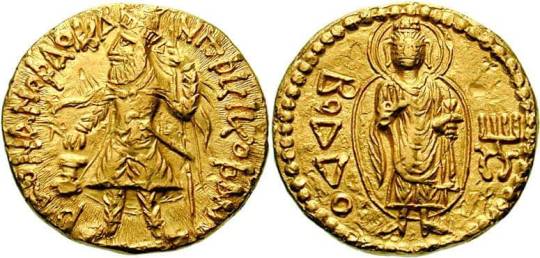

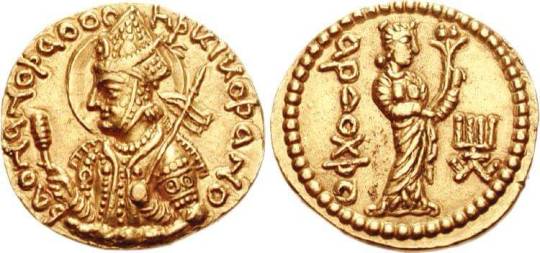
The Kushans were descended from the Yuezhi, a Tocharian-speaking (Indo-European) people originating from today's Xinjiang (Eastern Turkestan) region, who were pushed southwards by the invading Hunnic-Turkic tribes, thereby migrating to Afghanistan and Pakistan regions during the middle of 1st century AD where the Sakas (Scythians) and Parthians dominated/ruled. As the new rulers, the Kushans were able to successfully create a vast and prosperous empire, which at its peak stretched from Central Asia to northwest India, with the capital mostly in Purushapura (Peshawar).
Gandharan Civilization blossomed under the Kushans, with great progress made in the arts, architecture, and sciences. The Kushan Empire's economy greatly benefited from trade since it was in the middle of the Silk Route. Their acceptance and tolerance of many different religions and ethnic groups within their empire welcomed the fusion of diverse ideas/traditions, such as the creation of Greco-Buddhist art styles. Even though the Kushan rulers were culturally and religiously mostly Iranian, many other religions were also patronized or embraced. For example, the famous Kushan king, Kanishka, adopted Buddhism.
The Kushan religious pantheon is extremely varied, as revealed by their coins, on which about 30 different gods appear, belonging to the Hellenistic, the Iranian, and to a lesser extent the Indic world. Bactrian, an Iranian language and the official language of their empire, was mostly used but written in the Greek script.
Representation of entities from Greek mythology and Hellenistic syncretism on coinage are: Helios, Hephaistos, Selene, Anemos, Heracles, and Sarapis. The Indic entities represented on coinage include: Buddha, bodhisattava Maitreya, Mahasena, Skanda Kumara, Shakyamuni Buddha. The Iranian entities depicted on coinage include: Ashi Vanghuhi, Asha Vahishta, Atar, Khwarenah, Drvaspa, Vohu Manah, Mah, Mithra, Mazda vana, Aredvi Sura Anahita, Vata, Oxus, Ahura Mazda, Tir. Additionally: "Oesho" was long considered to represent the Indic Shiva, but more recently identified as Avestan Vayu.
The following are a few examples of Kushan coins with the ruler/king on one side and the god/deity on the other side:
#türkiye#doğa#travel photography#travel destinations#travel#manzara#view#natural#europe#africa#Spotify
30 notes
·
View notes
Text
NOVI SAD, Serbia (JTA) — In the heart of downtown in Serbia’s second-largest city, nestled between brick buildings on a leafy street, sits a large synagogue.
With its 130-foot-high central dome and faded yellow brick facade, along with its Jewish school and offices on either side, the synagogue’s three-building complex has become a must-see tourist attraction, with multilingual panels in its courtyard explaining the area’s Jewish history.
The synagogue was built to accommodate up to 950 worshippers in the first decade of the 20th century. But like the city and Serbia more broadly, the building has clearly seen better days. On two recent days, a family was camped outside the entrance, begging passersby for money.
Before World War II, Novi Sad had roughly 60,000 inhabitants, 4,300 of whom were Jews — about 7% of the total population. Most were affluent merchants, lawyers, doctors and professors. Their wealth was reflected in the city’s opulent synagogue, constructed between 1906 and 1909 by Hungarian Jewish architect Lipot Baumhorn, whose work incorporated elements of the Art Nouveau movement.
Today, however, the prominent building serves a dwindling community that, like others decimated by the Holocaust and further eroded by the Balkan wars of the 1990s, fears for its future as residents disperse abroad. Only about 640 Jews remain in Novi Sad; others have sought a future in Israel or countries that offer more economic opportunity.
“We use our own shul only for Yom Kippur,” said Novi Sad native Ladislav Trajer, the deputy president of the Federation of Jewish Communities of Serbia.
“We get six to 10 people for Shabbat — maybe 15 — but fewer than half are male so we can’t make a minyan,” said Trajer, referencing a Jewish prayer quorum of 10 men. He spent eight years in Israel and also served in the Israel Defense Forces. “Even in Belgrade, which is much larger, the rabbi doesn’t always get a minyan. And nobody here keeps kosher. You can’t get kosher meat.”
Novi Sad was a thriving center of Jewish life in prewar Yugoslavia and the city — now a metropolis of 370,000 sometimes called the “Serbian Athens” — was named a European Culture Capital of 2022 for its arts, food, architecture and other cultural scenes.
But most local Jews see few prospects for themselves in a country beset by economic turmoil. Between 1990 and 2000 — following Yugoslavia’s collapse; the ethnic wars in Croatia, Bosnia and later Kosovo; and the imposition of crippling sanctions by the United States, the European Union and the United Nations — Serbia’s GDP tumbled from $24 billion to $8.7 billion. By 1993, nearly 40% of Serbia’s people were living on less than $2 a day, and at present, the average Serb earns approximately $430 to $540 a month.
Despite those difficulties, Serbia agreed in 2017 to pay just over $1 million annually over the ensuing 25 years to its remaining Jews as compensation for property nationalized by the postwar communist regime. Half of that money goes directly to Jewish community organizations, 20% to Holocaust survivors and the remaining 30% to projects that aim to preserve Jewish traditions.
Since 2012, the Novi Sad community has also earned income by renting out its huge synagogue to the municipality for classical music concerts. In return, the city maintains the complex as a historic monument, and it is now repairing the synagogue’s roof and fixing leaky water pipes.
“These buildings were close to collapse,” said Trajer. He added that the city’s neglected Jewish cemetery can look like a forest. “So we are cutting the trees and struggling to put up fences.”
Although antisemitic incidents are not too common, Serbia, like most other countries in Eastern Europe, also contends with a strong nationalist streak. Trajer, who monitors antisemitism closely, said around 1,500 Serbs belong to extremist groups, of which perhaps 120 are active. Serbian Action, a small group of neo-Nazis, occasionally holds rallies and spray-paints antisemitic, anti-immigrant and anti-gay graffiti on public buildings.
“In high school, my history professor joked that Hitler couldn’t get into an art academy, and that’s why he decided to kill the Jews,” said Teodora Paljic, a 20-year-old Jewish university student. “I don’t talk about these things with people I don’t feel safe around.”
She said that “Life in Serbia is very difficult” because “all the prices have gone up, but salaries haven’t increased since 2019.”
Novi Sad is the capital of Vojvodina, an autonomous province that covers much of northern Serbia, and at the local Jewish community’s zenith, 86 synagogues flourished in the province. Today, only 11 remain standing, and most have fallen into disuse.
Mirko Štark, president of the Jewish Community of Novi Sad, said Jews first settled in the city in the 17th century, shortly after its founding in 1694 under the Hapsburg monarchy.
“When the Austro-Hungarian Empire, where most Ashkenazim lived, introduced new laws that restricted Jews from living in cities, many people ran to the border area, where these laws were not so strictly enforced,” Štark said. Later, when the Serbs captured Vojvodina, those restrictions were rescinded, and the Jewish community blossomed.
Following World War I and the establishment of the Kingdom of Serbs, Croats and Slovenes — later Yugoslavia — Novi Sad’s Jews enjoyed a cultural and economic renaissance that saw the formation of a Jewish community center, athletic clubs, choirs and several Jewish newspapers.
That renaissance ended abruptly in 1941, when the Hungarian army, in collaboration with Nazi Germany, occupied Novi Sad, making life for Jews intolerable. Over a three-day period in January 1942 now known as the Novi Sad Massacre, the Hungarians rounded up more than 1,400 Jews, seized their property, shot them in their backs and threw them into the freezing Danube River.
After Hungary’s capitulation to Germany, armed guards herded the city’s remaining 1,800 Jews into the synagogue and kept them there for two days in deplorable conditions without food or water. On April 27, 1944, the Nazis marched their weakened Jewish captives to the train station, then forced them on a train to Auschwitz that took two months to arrive due to Allied bombing.
Only 300 of Novi Sad’s Jews survived the Holocaust, and rebuilt the community virtually from scratch in the ensuing postwar chaos.
“There were no religious people anymore, and no rabbi,” said Štark. “Many went to Israel in the first aliyah. The small number of Jews remaining tried to keep the community alive, opening a kitchen to provide food for people who couldn’t buy for themselves. My grandmother survived Auschwitz. She worked in that kitchen.”
According to Trajer, from 1948 to 2022, no Shabbat services were held. These days, Trajer conducts all religious services because he’s the only one who knows the Hebrew prayers fluently.
With 640 members, Novi Sad has the nation’s second-largest Jewish population after Belgrade. The capital is home to more than half of the country’s 3,000 Jews, out of a total population of 7.1 million. Smaller Jewish communities can also be found in Subotica, Niš and other cities. Only the synagogues in Belgrade and Subotica — the latter located a few miles from the Hungarian border — still function.
Most members of the Novi Sad community, including Štark, have married non-Jews.
“My wife is not Jewish. Neither was my mother. Only my father was Jewish,” he said. “After World War II, the choices for finding husbands and wives within the community was limited. For this reason, we accept non-Jewish spouses as members. This is the only way to survive.”
Štark, 70, is a retired professor of media production who worked for years at Novi Sad’s main TV station. He’s also the longtime president of the synagogue’s choir, HaShira, which sings in Hebrew, Ladino and Yiddish and recently won an award for its performances in neighboring Montenegro. Only three of the choir’s 35 members are Jews.
“When I began my mandate as president a year and a half ago, we woke up many activities in the Jewish community that had existed only on a small scale before,” he said.
Besides the choir, these include the Zmaya dance troupe as well as a Jewish culture club that meets every Tuesday at 6 p.m. to discuss books and Israeli movies. There’s also a “baby club” for small children and another club for teens, whose activities are led by two adults. Hanukkah and Passover are celebrated by families together, and on Tu B’Shvat, the community plants trees.
The community is also investing in its members, and Paljic is emblematic of that hope.
Paljic, interviewed at the trendy Café Petrus, a 15-minute walk from Novi Sad’s Jewish cemetery, is the daughter of Jewish parents who met at a Purim party in Belgrade.
“My grandparents were killed in Jasenovac [a notoriously brutal concentration camp], but my best friend’s grandmother survived Auschwitz,” she said. “The problem is, people don’t talk about Judaism because they’re scared. There is still antisemitism. Last year, somebody drew a swastika at the entrance to the Jewish cemetery in Belgrade. We were all shocked.”
This summer, Paljic worked as a counselor at Hungary’s Camp Szarvas, which brings together young Jews from throughout Central and Eastern Europe. The camp welcomed 20 children from Novi Sad this year; the American Jewish Joint Distribution Committee paid their tuition.
While she would like to be close to her family, Paljic said she must be practical.
“I want to go somewhere outside Serbia when I finish college,” she said. “I don’t see my career here. I love art history and photography, but there’s no money in that in Serbia.”
Despite the challenges, Štark isn’t ready to say kaddish for Novi Sad’s Jews just yet.
“We will keep the Jewish spirit alive here. We are working hard, starting with the children,” he said. “If we don’t, everything will die in five or 10 years. So it depends on us.”
41 notes
·
View notes
Text

INTRODUCING BUDAPEST!
A new sub brand besides FOLKLORE and INTARSIA.
BUDAPEST is a collection of objects inspired by the exterior architecture of Eastern/Central European cities.



May you know, may you don't, I live in this gorgeous city with a long-long history. It started with aqueducts and amphitheaters from the Roman Empire, continued growing in the middle ages, got richer with baths built by the ottomans, earned wonderful baroque churches during Maria Theresia and her son Joseph II. A significant amount of buildings have survived from the Enlightenment Era and it reached its world-famous shape in the second half of the 19th century with tremendous growth. Also became known for its Art-Nouveau treasures, and its cafés became the center of the blooming cultural life of the 20s and 30s.
Each era is culturally rich enough for an entire season of CC and who am I to resist?
Creating sub brands helps sorting items by their look, function or social class. I created INTARSIA for the upper-middle class and the elite, FOLKLORE is for the poor and BUDAPEST is a collection of objects inspired by my beloved Budapest. I have a walking-route that I do twice a week, and it takes me from Kálvin Square into the historical dowontown of Pest, trough the famous Váci Street, along the Danube Promenade and then I arrive to the Parliament. Meanwhile I'm observing the historical facades and thinking about modelling them.
I'm planning to release more sub brands in the future, especially one that will be for post-war Eastern European lower-middle class.
See you soon!
#BUDAPEST#lilis palace#ts4 historical#wip#at the weekend and next week i'm going to visit Vienna is Austria. I'm about to make a ton of inspo pics all over the city >:) ahhaha
161 notes
·
View notes
Note
Hey, just saw your post about Egal the Bard or whatever his name is having inaccurate instruments and making inaccurate music. Your info was very helpful about the instruments, but could you please speak more to why it's musically inaccurate? Or maybe, do you have video examples of what traditional medieval ensemble music sounds like?
Thank you for asking! I run this blog to share things with the intellectually curious.
The misrepresentation of historical music is my pet peeve. I was not kind to this burnout bard, this short-shift schop, this miniature Minnesinger, because he is making the work of medievalists harder. I don't care if someone wants to play bard, but they shouldn't advertise their modern pop stylings as having been informed by the sonic architecture of the middle ages.
Here's the lowdown on medieval European instrumental music:
A lot of it came from North Africa and the Middle East. The Maghrebi Arab-Berbers, whom the Europeans called the Moors, conquered Andalusia and added it to the Umayyad Empire, which was huge and was comprised of Arabs, Persians, Turks, formerly-Byzantine Christians, and Jews. They brought instruments like the lute and shawm with them, and these instruments subsequently spread across Europe. The Moors brought a lot of culture to Europe in general: Córdoba became the European center of learning, especially in math, astronomy, medicine, and philosophy. The three Abrahamic faiths coexisted peacefully (well, after the invasion, and until the Christian Reconquista and subsequent expulsion of the Jews). Arabic, Persian, and Syriac cultures had also preserved classical Greek writings, and as Europeans returned from their various Crusades, they brought this knowledge with them. Aristotle inspired the monastic, literate intellectual life of medieval Europe, and Plato, via Arabic transmission, later inspired the Italian Renaissance.
We don't know how medieval instrumental music sounded, as we have no recordings and very few surviving instruments, and because most of the music and music theory that was written down was sacred a capella music recorded by literate monks and nuns. Secular instrumental music was seen as a baser art, although that was the opinion of the monastic intellectuals, whose perspective is the only one that survives in writ. History is written by the ruling classes.
We can gather clues by looking at medieval depictions of instrumentalists. Illustrations are often simple and stylized, and historicist luthiers' recreations based solely on iconography tend to be cartoony and rough (like anime cosplay!). They should be relegated to theatre props. However, iconographic evidence may be augmented with the study of surviving "folk" music traditions (pardon the classist label. All music is folk music because all music is made by folks!). Some European folk instruments are very old and have evidently changed very little over the centuries, and many of their Middle Eastern and North African progenitors are still played, and the artistry of the great instruments like the oud (lute) and qanoun (psaltery) has been cultivated to greater depths than were ever reached in Europe, because their roots are so much older. The European genius is just as brilliant, but fickle: it often discards its old tools for new ones. For instance, the barbat, the Central Asian/Greater Iranian lute, has been played since ancient Mesopotamian times, and its descendents are more popular today than ever before.
Unfortunately, the Anglophone medieval European academic scene is still overcoming its inherited Eurocentrism, and Arabic scholarship is largely inaccessible to us due to language barriers. I'm sure everything is thoroughly documented and annotated in Arabic scholarship...
If we want to imagine what medieval Al'Andalus sounded like, our best bet is to listen to traditional Andalusian ensembles. The Arab-Andalusian Orchestra of Fez is over a century old - the oldest Andalusian ensemble that is still active - and its repertoire goes back to the middle ages:
youtube
Note the melodic intervals sound European, not Arabic. The ensemble prides itself on this. European tuning theory has changed subtly over the centuries, but from its earliest Greek roots it is still recognizable to the modern western ear. Traditional Andalusi music is similarly familiar, though Arabic, Persian, and Turkish music sound microtonally exotic to unaccustomed ears.
We have a treasure, a 13th century Galician illuminated songbook from the court of Alfonso X, el Sabio, of Castile. It's called the Cantigas de Santa Maria and it is full of sacred and pseudo-sacred Marian poems with notated melodies and illustrations of musicians.
Here are scenes from the musical life of Alfonso's court:








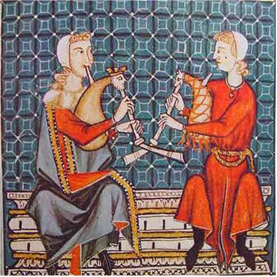

Here is a leading European early music ensemble's imagining of how it MAY HAVE sounded:
youtube
Here is another glimpse of the past, the painted ceiling of the Capella Palatina of Palermo, Sicily, Fatimid in style, from the 12th century. There are a lot of images of musicians on the six pages of this website.
In short, one mustn't take recordings of recreations of medieval music as gospel. Musicologists, music historians, and historical performers like myself do as best to be as authentic as we can, but the further we look back in history, the more we must engage in creative guesswork. It can be seen as artistic collaboration across time.
"The past is a foreign country."
- L.P. Hartley
13 notes
·
View notes
Note
Going off that last Dracula ask, do you have any reading material suggestions for anyone who might want to find more historically accurate info about Vlad Tepes and even the love affair details b/w Radu and Mehmed II? To get a better idea also of Matthias's role in Vlad's lifetime?
The easiest place for an English-speaking layperson to start is probably with Marcus Tanner's The Raven King: Matthias Corvinus and the Fate of His Lost Library (Yale University Press, 2001). It's part biography, part travelogue, and part history, and it covers the figure of Matthias himself and his legendary lost library pretty well. If you ignore Tanner's weird Male Historian misogyny toward Matthias's wives and failure to transcribe Hungarian names correctly, which I will admit are boggingly obscure nitpicks mostly of concern to me, it will give you a good sense of the time period, major figures, and Matthias overall.
As for Vlad, Dracula: Essays on the Life and Times of Vlad the Impaler, recently reissued (2020) from its Columbia University Press first edition in 1991, is also a great place to start on understanding the context of the historical figure and his actions in his subsequently-vastly-mythologized lifetime. It covers his foreign and domestic policy, his family background, his attacks against the Ottomans and relations with/opposition to Mehmed II, his religious strategies, and analysis of the subsequent folklore, heroic Romanian historical tradition, and other stories that grew up in Dracula's wake.
Sources for Mehmed include John Freely's The Grand Turk: Sultan Mehmet II - Conqueror of Constantinople and Master of an Empire, which came out in 2009 as the only significant biography of Mehmed since the 1970s. Nota bene that I have not personally read this book and am a little suspicious because it appears to have been written by guy whose academic specialty is physics, not history, even if he does live and teach in Istanbul. So yes, there is that, and more academic-history texts that focus on the broader geographical, cultural, and religious contacts and conflicts in the region during this time include Byzantines, Latins, and Turks in the Eastern Mediterranean World After 1150 and The Late Medieval Balkans: A Critical Survey From the Late Twelfth Century to the Ottoman Conquest.
I also have a list of more scholarly sources that focus on Matthias Corvinus, fifteenth-century Eastern Europe, geopolitics and religion, astrology and magic, and the subsequent folkloric tradition that surrounded him (as the Raven King) as well, including:
Darin Hayton, 'Expertise ex Stellis: Comets, Horoscopes, and Politics in Renaissance Hungary', Osiris: Expertise and the Early Modern State 25, No. 1, (2010), pp. 27-46.
Joseph Szövérffy, 'History and Folk Tradition in Eastern Europe: Matthias Corvinus in the Mirror of Hungarian and Slavic Folklore', Journal of the Folklore Institute, Vol. 5, No. 1 (Jun., 1968), pp. 68-77
Istvan Lukacs, 'King Matthias Corvinus in the Collective Memory of the Slovenian Nation', Studia Slavica Hung. 55/2 (2010) 371–379.
Pavel Kalina, 'European Diplomacy, Family Strategies, and the Origins of Renaissance Architecture in Central and Eastern Europe', Artibus et Historiae 30, No. 60 (2009), pp. 173-190
Scott E. Hendrix, 'Astrological Forecasting and the Turkish Menace in the Renaissance Balkans', Antropologija 13: 2 (2013)
Suzana Miljan and Hrvoje Kekez, 'The Memory of the Battle of Krbava (1493) and the Collective Identity of the Croats', The Hungarian Historical Review, Vol. 4, No. 2, Cultures of Christian–Islamic Wars in Europe (1450–1800) (2015), pp. 283-313.
38 notes
·
View notes
Text
Today i be going to The Kaunas city center
My City Kaunas is the second largest city in Lithuania after Vilnius and an important centre of Lithuanian economic, academic and cultural life.
My City Kaunas was first mentioned in 1361 and was granted the city rights in 1408
Kaunas was the largest city and the centre of a county in the Duchy of Trakai of the Grand Duchy of Lithuania and Trakai Palatinate since 1413.
In the Russian Empire, it was the capital of the Kaunas Governorate from 1843 to 1915.
During the interwar period, it served as the temporary capital of Lithuania, when Vilnius was seized and controlled by Poland between 1920 and 1939. During that period Kaunas was celebrated for its rich cultural and academic life, fashion, construction of countless Art Deco and Lithuanian National Romanticism architectural-style buildings as well as popular furniture, the interior design of the time, and a widespread café culture.
The city interwar architecture is regarded as among the finest examples of European Art Deco and has received the European Heritage Label. It contributed to Kaunas being named as the first city in Central and Eastern Europe to be designated as a UNESCO City of Design. Kaunas has been selected as the European Capital of Culture for 2022, together with Esch-sur-Alzette, Luxembourg and Novi Sad.
The city is the capital of Kaunas County, and the seat of the Kaunas city municipality and the Kaunas District Municipality. It is also the seat of the Roman Catholic Archdiocese of Kaunas. Kaunas is located at the confluence of the two largest Lithuanian rivers, the Nemunas and the Neris, and is near the Kaunas Reservoir, the largest body of water in the whole of Lithuania.
As defined by Eurostat, the population of Kaunas functional urban area, is estimated at 383,764 (as of 2017),while according to statistics of Kaunas territorial health insurance fund, there are 447,946 permanent inhabitants (as of 2022) in Kaunas and Kaunas district municipalities combined.
And in 2022 Kaunas was also the European Capital of Culture
7 notes
·
View notes
Text

Prague at Night
An astronaut aboard the International Space Station took this photograph of Prague during a nighttime orbit over Central Europe. Prague is the capital of the Czech Republic (also called Czechia) and has been a crossroads for civilization and European trade for more than 1,000 years. The Václav Havel Airport Prague is visible as a bright cluster of lights. The airport is a critical part of Prague’s tourism industry, providing access to one of Europe’s most visited cities.
The dark meandering Vltava River contrasts with the bright lights of the city. The river flows for approximately 31 kilometers (19 miles) through the center of Prague and is crossed by 18 bridges that link each side of the city. Several of these bridges are visible as narrow strips of bright artificial lights in the full-resolution version of the photo.
Old Town, the city’s most historic district, is located on the eastern bank of the Vltava River in the center of Prague. This is the largest zone of orange-hued street lights where the Charles Bridge, astronomical clock tower, and numerous centuries-old buildings are located. Charles University is also located within Old Town, and at nearly 700 years old it is the oldest university in the Czech Republic. Due to its extensive architectural and cultural history, Old Town was designated as a UNESCO World Heritage Site in 1992.
Across the river from Old Town, historic Petřín Hill is visible as a large dark spot. The hill is one of the highest points in the city and provides a great view of Prague Castle, located just north of the hill. Stromovka park, the largest park in Prague, is recognizable as a large unilluminated area north of Petřín hill. The greenspace is a former royal hunting ground located within a bend of the Vltava River and spans 100 hectares (250 acres).
Astronaut photograph ISS066-E-187571 was acquired on March 21, 2022, with a Nikon D5 digital camera using a focal length of 400 millimeters. It is provided by the ISS Crew Earth Observations Facility and the Earth Science and Remote Sensing Unit, Johnson Space Center. The image was taken by members of the Expedition 66 crew. The image has been cropped and enhanced to improve contrast, and lens artifacts have been removed. The International Space Station Program supports the laboratory as part of the ISS National Lab to help astronauts take pictures of Earth that will be of the greatest value to scientists and the public, and to make those images freely available on the Internet. Additional images taken by astronauts and cosmonauts can be viewed at the NASA/JSC Gateway to Astronaut Photography of Earth. Caption by Cadan Cummings, Jacobs, JETS Contract at NASA-JSC.
2 notes
·
View notes
Text
Today, we'll be taking a look at one of the most powerful and long-lasting empires in history - the Ottoman Empire. For almost 700 years, the Ottomans ruled over vast territories in Europe, Asia, and Africa, leaving a lasting impact on the world we know today. So, let's dive into the history of this fascinating empire.
The Ottoman Empire was founded in 1299 by Osman I, a Turkish warrior and chieftain. Under Osman's leadership, the small state of Anatolia expanded rapidly, thanks to its strategic location between the Byzantine Empire and the Islamic world. In 1453, the Ottomans achieved their greatest triumph when they captured Constantinople, the capital of the Byzantine Empire, ending its thousand-year history and establishing Istanbul as the new imperial capital.
Over the centuries, the Ottomans continued to expand their territories through a series of conquests and wars. The empire reached its zenith in the 16th century, when it controlled much of southeastern Europe, western Asia, and northern Africa. The Ottomans were renowned for their military prowess, their skilled diplomacy, and their administration of a complex and diverse society.
One of the key features of the Ottoman Empire was its religious tolerance. While the Ottomans were Muslim, they allowed for the coexistence of various religious and ethnic groups within their territories. Christians, Jews, and other minorities were able to practice their faiths and maintain their customs, as long as they paid their taxes and recognized the Ottoman authority. This policy of religious diversity helped the Ottomans to build a vast and heterogeneous empire that was able to withstand internal divisions and external threats.
Another hallmark of the Ottoman Empire was its culture and art. Ottoman architecture, music, literature, and cuisine were all highly refined and distinctive. Some of the most impressive buildings in Istanbul, such as the Topkapi Palace and the Blue Mosque, date back to the Ottoman era. Ottoman literature and poetry, such as the works of the famous poet Rumi, are still read and appreciated today. And the Ottoman cuisine, which blended Middle Eastern, Mediterranean, and Central Asian flavors, has had a lasting influence on the culinary traditions of the region.
However, the Ottoman Empire faced its share of challenges and conflicts over the centuries. As the world began to modernize and industrialize in the 19th century, the Ottomans struggled to keep pace. They faced economic, political, and military pressures from European powers, who sought to carve up the empire and exploit its resources. The Ottomans also had to contend with nationalist movements from within their own territories, as various ethnic groups sought greater autonomy and independence.
Ultimately, the Ottoman Empire was dissolved after World War I, when it sided with the Central Powers and suffered a devastating defeat. The empire was replaced by the modern state of Turkey, which sought to build a secular, democratic, and nationalist society. However, the legacy of the Ottoman Empire still lives on in many ways, from the architecture and art of Istanbul to the traditions and customs of the diverse peoples who once lived under Ottoman rule.
So, that's a brief look at the history of the Ottoman Empire - a remarkable and complex civilization that left an indelible mark on the world. We hope you enjoyed learning more about this fascinating topic.

3 notes
·
View notes
Text
Growth and prosperity
Philip II showed interest in urban development, particularly over financial benefit for the crown and political gain by alliance with urban elites. There is a distinction to be made between the treatment of towns in the demesne and those outside it. Philip, like his predecessors, was prepared to make wider grants of privilege to towns outside the demesne so as to appear as their protector.
Paris was now unquestionably the capital of the Capetian realm and a major European city. Its schools became a university in this period, attracting leading intellectuals and scholars, and many students. Philip built a covered market at Les Halles for the merchants and paved the main streets. He built a new wall and the castle of the Louvre, defending Paris from the west. Recent excavations beneath the modern art gallery and its courtyard have shown the true dimensions and strength of Philip's fortifications. The Louvre enclosed a space of 78 metres by 72. The new walls were four metres thick, studded with ten towers, and protected by a moat filled from the Seine. The central keep, the Grosse-Tour, was cylindrical and 31 metres high, protected by a circular dry ditch six metres deep. Ferrand of Flanders was imprisoned there after Bouvines. The Louvre had two gates, a drawbridge to the eastern gate to the town, and a southern gate with access to the river.
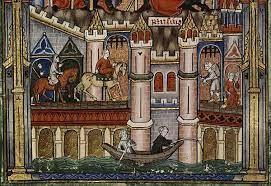
Philip added defences to other French towns. His first register noted work on Laon, Compiègne, St-Mard and Melun. Curtain walls, towers, gates and ditches were built. A major new tower was built at Bourges in 1190. Instructions were sent to Garnier the mason and Gilbert the ditcher. By the end of Philip's reign every major town in the demesne had a fortress and wall. Philip's castles were massive. The tower at Villeneuve-sur-Yonne was over 27 metres high with a ditch 13 metres wide. They also have architectural interest with the emphasis on round towers- as in the Louvre. The records mention at least 18 new cylindrical towers. Dun-le-Roi in Berry used the Louvre as a model. The tower at Issoudun was cylindrical; the added spur an early example of an en bec tower. Philip's last major castle was at Dourdan with the keep in one corner, concentrating on the walls rather than the interior- the direction in which castle planning would go. Philip II was one of the greatest of medieval castle-builders, on a level with Edward I.
Philip gave protection to fairs and markets throughout the realm, as for Compiegne in 1185, when merchants going to the fair were guaranteed royal protection. In 1209 the Champagne fairs were promised similar protection. It was part of Philip's bid for support from merchants, and brought additional revenue. Register A recorded demesne rights in 32 towns. Royal towns were more freely able to recruit new citizens from serfs admitted to them. Communes prospered under Philip. They welcomed the new independence in administration, justice and financial arrangements. They raised and trained their own militias and were loyal supporters of the crown. Philip was sympathetic to communes, making grants of the status to Chaumont in 1182, Amiens 1185 and Pontoise 1188. He was more cautious over towns in the demesne, though granted them privileges. Commune status was a means of winning support in newly conquered areas, as at Les Andelys and Nonancourt after the conquest of Normandy. Beauvais valued its new commune charter: 'in no event will it [the charter] be taken outside the city'. Citizens knew the value of royal support. Walter Tirel granted a commune to Foix, but the citizens still wanted royal approval - going to Philip in Paris for a charter. The value to the king was also considerable. The tallies collected by thebaillis from demesne towns were very profitable - £2,995 from Paris, £1,500 each from Etampes and Orleans. Possibly as much as 15% of royal income came from Paris but less pressure for payment was put on newly acquired towns. The period saw economic advance and prosperity for France. William the Breton noted the fertile fields and vines of his native Brittany, the salmon and eels caught from fishing, and the flourishing of trade.
Robert Fawtier- The Capetians Kings of France
3 notes
·
View notes
Photo
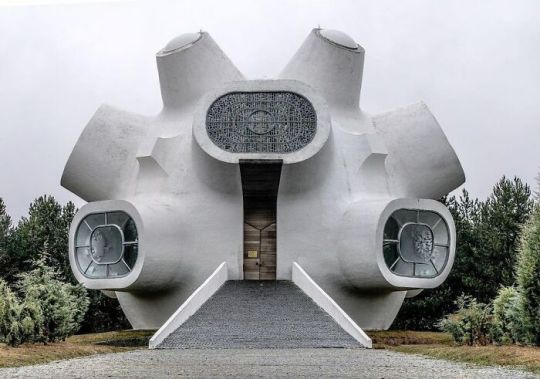
Ilinden / Makedonium – A Monument Dedicated To The Fighters And Revolutionaries Who Participated In The Ilinden Uprising Of 1903
Revitalizing The Heritage Of Socialist Modernism: BACU’s Online Initiative To Protect Central And Eastern European Architecture
Preserving the monumental yet decaying structures of central and eastern Europe erected between 1955-91 is the mission of the online initiative, Socialist Modernism, created by the Bureau for Art and Urban Research (BACU). With an aim to revitalize this heritage, BACU believes in the significance of these elements which managed to defy some of the ideological requirements of their time, giving the urban space a distinct flavor characteristic of the socialist period.
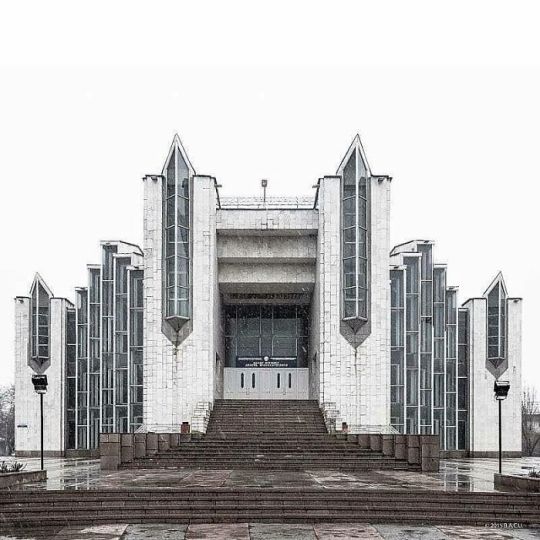
Palace Of Weddings, Bishkek, Kyrgyzstan, Built In 1987
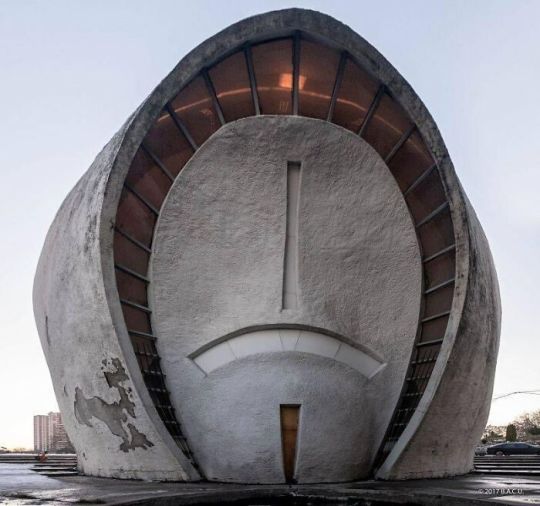
One Of The Two Halls Of Parting, Memory Park (Kyiv/Kiev) Ukraine. Built 1968–1981
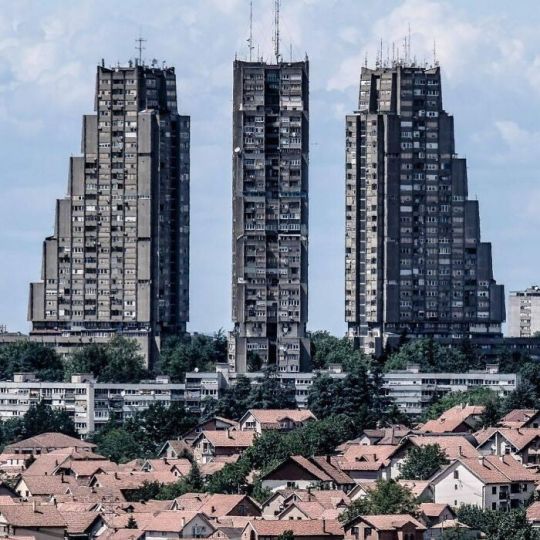
Eastern Gate Of Belgrade, Rudo Buildings, (Istočne Kapije) Belgrade, Serbia, Built In 1976, Architect: Vera Ćirković Engineer: Milutin Jerotijević
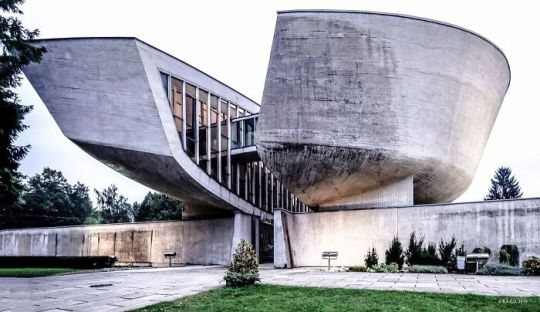
Museum Of The Slovak National Uprising, Banska Bystrica, Slovakia, Built In 1969
#socialist modernism#bureau for art and urban research (bacu)#central and eastern european architecture#architecture#history#socialism#heritage#ilinden uprising#palace of weddings#bishket#kyrgyzstan#halls of parting#memory park#kyiv#kiev#ukraine#belgrade#servia#museum of the slovak national uprising#banska bystrica#slovakia
5 notes
·
View notes
Text
Into the unknown
Shooting a documentary is hard to plan for as it is... shooting a documentary in a foreign country, well that I don't know how to prepare for. In the past I've always had a chance to visit the location at least once, or speak to the subjects and get to know them before the shoot. This time the only aspect of the story I have access to is its protagonist - Natalia. Having worked with her in the past, we've developed a really good working relationship and we trust each other when it comes to unpredictable creative endeavours. Alongside that, I'm betting on my Slavic card and hoping that Polish customs and mentality aren't so far off the Croatian ones.
While Natalia's been working on her treatment, I've been able to create a rough shotlist based on the points she is certain she wants to hit when we get to Poland. Given the observational nature of the film, most of the scenes are centred around her grandparents' daily routine - going to the graveyard, gardening, cooking and chatting to their granddaughter. When Natalia visited over Christmas, she took some photos of the space which helped me visualise where I could potentially set up my shots and which lenses to use.

From what I understand, the majority of action will take place in the kitchen, the living room, and Sebastian's (now Natalia's room). The first two rooms on the bottom floor are spaces in which Natalia will be interacting with her grandparents, while the upstairs bedroom is a space in which Natalia can reflect and investigate her emotions/memories.
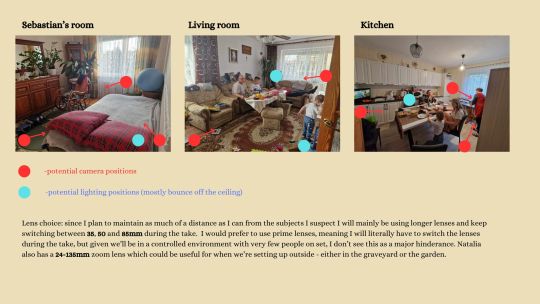
I think one of the many things Natalia and I have in common having grown up in Eastern Europe is not celebrating Halloween, but being dragged to a graveyard come October for the Day of the dead. So given my cultural background, I don't think I'll struggle finding my way round a Polish graveyard. And at the risk of sounding like that pick-me-art-boy, I do think Eastern European graveyards are architecturally unparalleled. Why? Because there is no structure, no restrictions and no holding back - it's a game of display of wealth in a post-communist landscape, one comrade against another comrade's grave. So here are some photos I took while in Prague, fascinated by the said display of wealth (or lack thereof):
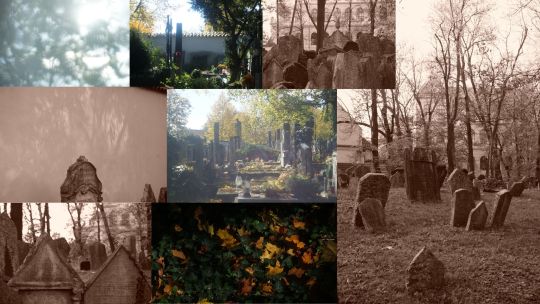
So with all this information collected I was able to create a kind of temporary map in my head, a mental recce I could go on and understand the kind of coverage I would need. I started a shotlist which I plan to update with every day we're there. Once I am able to observe how Natalia's grandparents live and breathe I will be able to add specific moments I'd like to capture on camera.

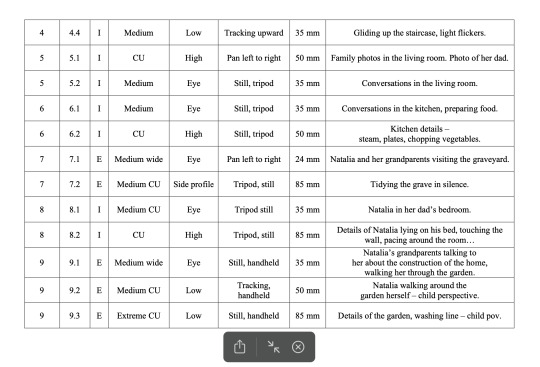
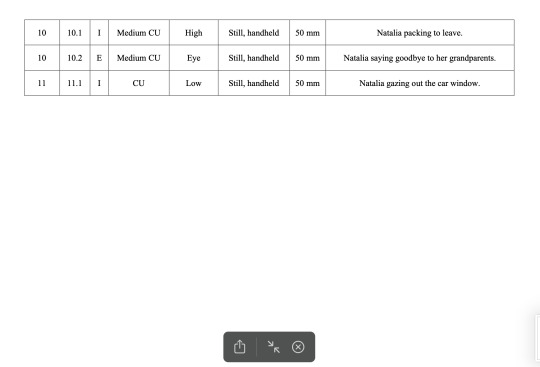
Considering the film's sensitive subject and the fact that Natalia chooses to be an active protagonist in it, rather than the one behind the camera, I have a feeling I will sometimes have to be the one asking the questions and guiding the action, so with that in mind, I needed to draw some boundaries with Natalia and understand the things that were too vulnerable for her to discuss. I arranged a sort of interview session with just me and her, so I could ask her some questions and get a better understanding of her family's dynamics. I thought it would be good to interview her while she was preoccupied doing something else, as I felt that a talking head style interview would be too impersonal. We agreed to meet 2 days before flying to Poland so I could capture her packing and saying goodbye to her boyfriend, as this was something I felt could very well be included in the edit so we establish the journey she is going on.
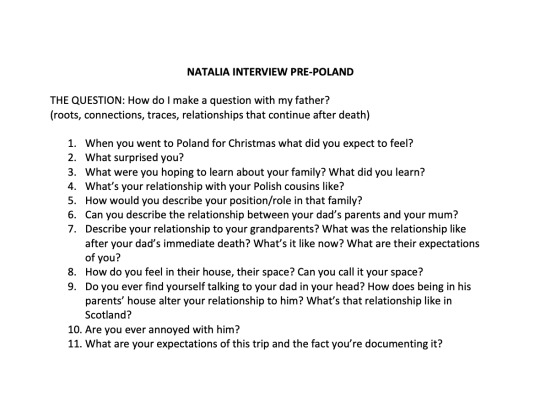
Just before I met up with Natalia, the two of us also had a meeting with Sana and she helped us flesh out the film's hypothetic arc. From that one conversation, both Natalia and myself felt a lot more confident going away as we established the film's central question and the emotional journey we wanted to depict. Natalia opened up about the areas she was keen to explore, as well as those she didn't want to address in the film and that helped me navigate our packing interview. Hearing Sana's questions helped me form my own, and in doing so I was able to create a clear list of themes and images I want to hit when we get to Poland. Right now, the film aims to explore 2 journeys - one of Natalia trying to connect with her dad and one of Natalia connecting with the house in Poland. The latter is something I'm have previously explored myself in my work - the difficulty of connecting with your former home, once you have started a life somewhere else - and this personal point of entry into Natalia's story helps me both mediate and filter what's important amongst a vast sea of material we're going to produce. Starting in her Glasgow home feels necessary both from a narrative and a filmmaking standpoint - she is an immigrant, and we need to set-up her character as such, but more importantly, the two of us need to get comfortable standing behind and in front of the camera again. So this is our last chance at warm-up, before the big match.
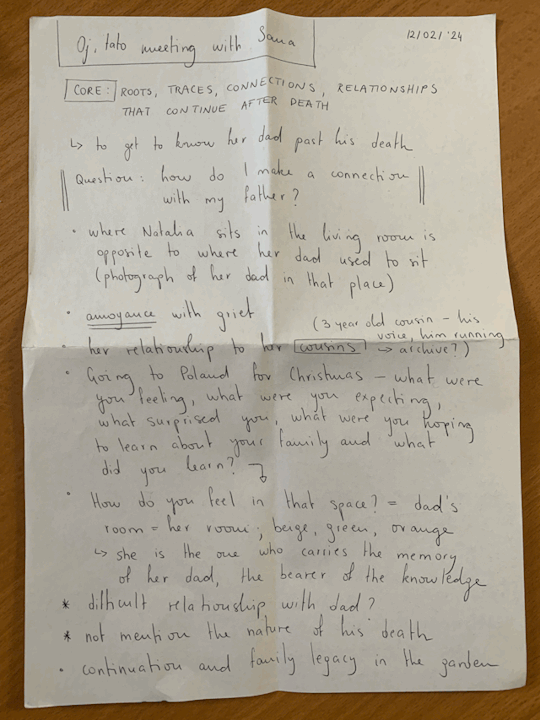
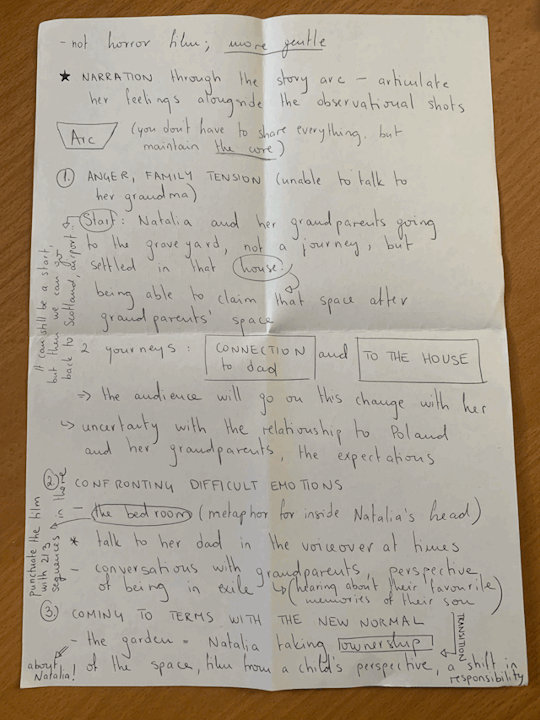
0 notes
Text
Experience the Beauty of Canada: Your Complete Travel Guide
Your ultimate travel and tour guide in Canada to exploring the breathtaking beauty of Canada. From the majestic Rocky Mountains to the stunning coastal landscapes of Nova Scotia, Canada offers a diverse range of experiences for every traveller.
Whether you're an adventure enthusiast, a nature lover, or a culture seeker, Canada has something special in store for you.
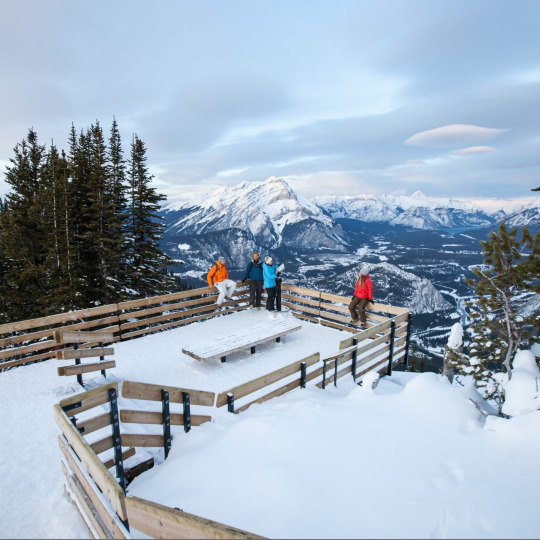
Discover the Diversity of Canada
Explore Natural Wonders
Canada boasts some of the most awe-inspiring natural wonders in the world. Visit Banff National Park in Alberta to witness turquoise lakes, glaciers, and rugged mountain peaks. Take a scenic drive along the Icefields Parkway for panoramic views of pristine wilderness. Don't miss the chance to see Niagara Falls, one of the most iconic waterfalls on the planet, located on the border between Ontario and New York.
Embrace Outdoor Adventures
For adrenaline junkies, Canada offers a plethora of outdoor activities year-round. Go skiing or snowboarding in Whistler, British Columbia, renowned for its world-class slopes. In the summer, embark on a thrilling whitewater rafting expedition in the rivers of Quebec or go hiking in the remote Yukon territory.
Experience Vibrant Cities
Visit Cultural Hotspots
Immerse yourself in the vibrant cultural scene of Canada's cities. Explore the multicultural neighbourhoods of Toronto, where you can sample diverse cuisines from around the world. Wander through the historic streets of Quebec City and marvel at its European charm and architecture. Experience the vibrant arts scene in Vancouver, home to numerous galleries, theatres, and music venues.
Indulge in Culinary Delights
Canada's culinary scene is as diverse as its landscape. From fresh seafood on the east coast to farm-to-table cuisine in the prairies, there's something to tantalise every palate. Don't forget to try iconic Canadian dishes like poutine, maple syrup-infused treats, and butter tarts.
Practical Tips for Travelers
Weather Considerations
Canada experiences distinct seasons, so pack accordingly. Winters can be harsh, especially in the northern regions, so bundle up with layers and winter gear. Summers can be warm and humid, particularly in central and eastern Canada, so lightweight clothing is essential.
Transportation Options
Getting around Canada is easy thanks to its well-developed transportation network. Renting a car is a convenient option for exploring remote areas, while public transportation is readily available in major cities. Domestic flights are also available for long-distance travel between provinces.
Embark on the adventure of a lifetime and let Travelling Chicken guide you through the wonders of Canada. Whether you're seeking adrenaline-pumping activities or serene natural landscapes, Canada promises an unforgettable experience for every traveller. Plan your trip today and discover the beauty of the Great White North! Contact us now for more information!
0 notes
Text
Russia’s ongoing war in Ukraine has caused unimaginable suffering for millions of people and overturned Europe’s security architecture. With little end to the fighting in sight and Ukraine’s armed forces poised to go on the offensive with more arms coming from the West, there is a silver lining to the conflict. Warsaw and Kyiv have become strong allies.
The declaration that “there’s no free Poland without a free Ukraine”—often attributed to Poland’s founding father, Jozef Pilsudski—that bound Poles and Ukrainians to stop Soviet imperialism in 1919 rings equally true today. At the time, the Red Army was planning on igniting world revolution but was stopped and turned back by Polish and Ukrainian forces.
Then, as today, the slogan proves that the notion of a Europe without a sovereign Ukraine is no longer conceivable. For Kyiv and Warsaw, the prosperity of one is pinned to the success and stability of the other. The opening lines of the two countries’ national anthems are nearly identical: “Poland/Ukraine is not yet lost,” conveying a unique characteristic of national obstinacy to survive partition, occupation, or enemy aggression. Both were penned in defiance of Russian imperialism.
Despite episodes of friendship, relations between Poles and Ukrainians in the 20th century were marked by animosity and ethnic cleansings. Soviet and Nazi German occupations turned borderlands into bloodlands, with mutual grievances and stereotypes leaving lasting scars. After 1945, the communist regime in Poland internally displaced Ukrainians to fulfill objectives set out to “resolve the Ukrainian problem once and for all.” Civilians, suspected of nationalistic tendencies, were regarded as sympathizers of “bestial” Ukrainian insurgents, who slaughtered thousands of Poles in Volhynia and Eastern Galicia in 1943-44.
Collective responsibility was applied in 1947, when more than 140,000 Ukrainians were driven from borderland regions in the southeast to postwar territories in the north and west (onetime German lands that had become part of Poland). The goal of this military operation (code name ‘Vistula’) was to destroy Ukrainian identity and culture in communist Poland.
Regime propaganda in film and literature cultivated a harmful image of Ukrainians as bloodthirsty fascists. Even though Poland was the first country, along with Canada, to recognize Ukraine’s independence in 1991, public polling showed that negative views toward Ukrainians lingered throughout the 1990s. This difficult history makes Poles’ solidarity with Ukraine today even more remarkable.
Poland knows that when given the tools and know-how, Ukraine will quickly shift from being a consumer of Western security to a critical provider of it for the Euro-Atlantic community. These like-minded anti-imperialists not only threaten to upend Russian President Vladimir Putin’s revanchist drive once and for all but are accelerating the shift of Europe’s political and military center of gravity east, something that will redefine the European Union and NATO for decades to come. The West should prepare for contingencies following the fall of Putin’s empire—one of which is a postwar Europe underpinned by a Polish-Ukrainian strategic alliance.
Nothing irritates Putin more than close relations among the nations of East Central Europe that were once part of the Soviet bloc, opposed Russian expansionism in the past, and contributed to the collapse of the Soviet Union, which Putin bemoaned was the “greatest geopolitical catastrophe of the century.” Strategic measures such as the recent joint declaration by the presidents of Lithuania, Poland, and Ukraine reaffirming their readiness to continue strengthening Kyiv’s defense capabilities and promoting more support in NATO and the EU drive him mad.
In his eyes, Ukraine, Lithuania, Latvia, Estonia, and Belarus constitute a gray zone of small states within Moscow’s sphere of influence, the so-called near abroad, that remain up for grabs in the global contest between superpowers. Putin regards their Euro-Atlantic membership and aspirations as a dangerous impediment to overcome; without keeping them under Russia’s boot, he doesn’t see a way to rebuild and expand Moscow’s influence.
It’s no surprise then that these countries are the targets of Russian cyberattacks, disinformation campaigns, political meddling, and armed aggression. To counter Putin’s ambitions, they have launched various multilateral frameworks. These include the Lublin Triangle, a trilateral platform designed to build stronger political, economic, infrastructure, security, defense, and cultural links among Lithuania, Poland, and Ukraine, and the Riga Format between the Baltic states and Poland. Given Hungary’s pro-Russian attitude and France and Germany’s initial wavering on helping Ukraine, these multilateral forums have eclipsed the influence and importance of previous Eastern European blocs, such as the Visegrad Group.
Strategic ties between Warsaw and Kyiv are developing pragmatically. Criticized at one time by partners as a political laggard, Poland recognized the threat posed by Putin’s neoimperialist rhetoric to Ukraine and the Euro-Atlantic alliance, in which Warsaw is securely anchored. It is Europe’s leading security entrepreneur, modernizing its armaments to meet its commitments of defending allies and deterring threats—rising to the rank of key ally against a revanchist Putin.
The outpouring of solidarity shown by everyday Poles toward Ukrainians seeking refuge from war goes without saying. Since Feb. 24, 2022, more than 9 million Ukrainians have entered Poland, with as many as 1.5 million to 2 million staying and others returning home. While millions fled to Poland seeking safety, there was no need for refugee camps. Instead of makeshift tents and temporary U.N. campgrounds common during refugee crises, Poles opened their homes to their Ukrainian neighbors. Considered an outlier by some European partners on its refugee positions in the past, Poland is now the continent’s unquestioned humanitarian giant, suggesting a sense of moral obligation that coincides with a fraternal affinity with Ukraine.
More than 1.3 million Ukrainians have received the Polish equivalent of a Social Security number, which allows them to find legal employment. They are given access to public health care, kindergartens, schools, and direct financial assistance. According to the Polish Economic Institute, between January and September 2022, 3,600 companies with Ukrainian capital and 10,200 Ukrainian sole proprietorships were established in Poland; 66 percent of the businesses surveyed declared that they would continue operating in Poland regardless of the situation in Ukraine.
Moreover, individuals returning to Ukraine after the war are likely to remember the hospitality shown to them by Poles and will be influenced not only by Russia’s war of extermination but also by positive experiences in Poland. Having been part of the workforce, a large number of adults will be able to communicate in Polish, while their children will be fluent after having spent a few months or years in Poland’s educational system. Already, the number of Ukrainians interested in learning Polish is rising (36 percent) and will continue to do so.
Developing social bonds will likely affect future political relations between the two states. Findings of a public opinion poll conducted in Ukraine by the Mieroszewski Centre indicate that while 40 percent of respondents think Poland and Ukraine should simply be good neighbors, 58 percent of Ukrainians believe that the two should forge closer ties beyond that: 29 percent prefer an alliance where both support each other while coordinating on foreign policy, and another 29 percent believe that relations should take the form of a commonwealth with a purely symbolic border and a common foreign policy.
Try as he may, Putin’s war machine has been unable to successfully do what Nazi Germany or the Soviet Union did in the past—exploit animosities to divide Poles and Ukrainians. Russian propaganda spread throughout the war about Poland’s purported secret plans of regaining western Ukrainian territories that belonged to it in the past is unconvincing. If anything, it’s having the opposite effect.
Of course, Poles and Ukrainians have mutual grievances about tragic events of the past, especially in the 20th century. For the sake of the victims’ memory, events such as the murder of Poles in Volhynia and Eastern Galicia in 1943-44 and the forced resettlement of Ukrainians in 1947 should not be swept under the rug but rather studied and commemorated. A good sign is how more emphasis is being placed on what unites rather than divides the two countries—namely, the existential threat of Russian neoimperialism.
The Polish and Ukrainian presidents laying flowers side by side at a military cemetery in Lviv, a city the two nations fought over in the early 20th century, became an iconic image galvanizing how history isn’t standing in the way of pursuing strategic ties. The more time younger generations who don’t live with past scars and memories spend together, the more likely reconciliation over historical events is possible.
An outspoken defender of Ukraine’s territorial integrity on the global stage, Poland is seen by more and more Ukrainians as not only a friend but a crucial ally: 87 percent of Ukrainians trust Polish President Andrzej Duda more than any other Western leader, including U.S. President Joe Biden (79 percent). Poles also have a favorable view of Ukrainian President Volodymyr Zelensky. In one poll, he topped the list of foreign leaders whom Poles trust most (86 percent), with Biden coming in second (74 percent).
To commemorate Poland’s Independence Day last November, Zelensky recorded a message in which he said, “Ukrainians will always remember the help they received from Poles. You are our allies, and your country is our sister. We have had our differences, but we are kin, and we are free.” That same day, Ukraine’s first lady, Olena Zelenska, posted a spot depicting a Ukrainian woman and her children leaving their home, finding shelter in Poland, and receiving comfort in the arms of a Polish volunteer. When her husband dies in the war, she says: “When I realize that I’ll never see him again, you cry with me. When I don’t have the strength to go on, you help lift me up. I am Ukraine. You are Poland. And our hearts beat together.” It is difficult to recall a moment in history when Poles and Ukrainians were this close.
Putin’s aggression and the atrocities committed against innocent civilians have permanently turned Ukrainians away from Russians and any idea of pursuing postwar ties with Moscow, let alone forgiving them. Soldiers on the front lines and victims in towns such as Bucha are creating a new generation of heroes and martyrs that the entire nation—and world—calls their own. Their sacrifices automatically reaffirm Ukrainians’ national consciousness and identity around strong anti-imperialist sentiments—something they share with their closest allies Poland and the United States. Kyiv’s natural trajectory in the future is to gravitate closer to Poland and the West.
This process shouldn’t be treated by either country as a make-or-break moment for the bilateral relationship but as a genuine desire by both to prove authoritarian bullies like Putin wrong.
In his groundbreaking work Imperial Ends, Alexander Motyl notes that empires end not when the core ceases to control the peripheries but when the peripheries begin to significantly interact with one another. This process is now underway between Poland and Ukraine. With Poland firmly ingrained in the Euro-Atlantic community and Ukraine aspiring to join its formal structures, their postwar relationship can’t be superficial but must be dynamic.
A strong partnership built around the Warsaw-Kyiv nexus, backed by stakeholders like Canada, Britain, and the United States, will underpin Europe as it goes through the painstaking process of reprioritizing political, economic, and defense agendas. If the West fails to champion this strategic partnership that could hasten Putin’s defeat, there is a dangerous possibility of leaving Europe vulnerable to a hostile Russia and future instability.
6 notes
·
View notes
Text
The Single Best Strategy To Use For Marrakech
You'll find 1000s of persons filling up the sq. and an limitless quantity of charming street performances and exhibits.
Marrakech is house to by far the most magnificent resorts in Morroco—and so they’re undoubtedly well worth the splurge. But, based on Everything you’re on the lookout for, You may also locate genuine, stunning accommodations over a spending plan.
Chilly desert: snow area at Dome C Station, Antarctica Chilly deserts, in some cases often called temperate deserts, take place at bigger latitudes than very hot deserts, as well as the aridity is brought on by the dryness in the air. Some cold deserts are far within the ocean and Other people are divided by mountain ranges through the sea, and in equally situations, there is inadequate dampness inside the air to induce Significantly precipitation. The biggest of these deserts are located in Central Asia. Other people happen around the japanese facet of the Rocky Mountains, the jap side with the southern Andes As well as in southern Australia.
We do the job with just about every significant tour corporation in the world, and you'll find their cheapest licensed rates on This great site. Even so, when you ever locate a lower cost for the same corporation, tour and date, right before reserving, we will match it.* Assistance Warranty
Aerial perspective of Makhtesh Ramon, an erosion cirque of a kind exceptional towards the Negev Lots of individuals think about deserts as consisting of substantial regions of billowing sand dunes since that is the way they are frequently depicted on Tv set As well as in films,[fifty five] but deserts do not normally seem like this.
This is often thought to generally be attributable to the stresses place to the rock by recurring thermal expansions and contractions which induces fracturing parallel to the original surface area.[forty eight] Chemical weathering procedures in all probability Enjoy a far more crucial part in deserts than was Earlier imagined. The necessary dampness can be existing in the form of dew or mist. Floor h2o may very well be drawn on the surface by evaporation along with the formation of salt crystals may possibly dislodge rock particles as sand or disintegrate rocks by exfoliation. Shallow caves are occasionally shaped at the base of cliffs by this means.[48]
Generally time I would catch whiffs of incense from the tiny streets, at other moments It could be the scent of leather that could fill my nose.
Madrasas are ancient Quranic educational institutions. They are available throughout Morocco As well as in other Islamic nations around the world for example Uzbekistan. They sometimes have stunning intricate tile styles and they are masterpieces of architecture.
When we arrived at our camp for that night, we were greeted with heat tea and some very tasty nearby foods. This normal camp was far more touristic and there were all kinds of other attendees and guides.
Moroccan, European The perfect spot for a lightweight lunch, I like the neat throwback variety of Le Jardin. They’ve also obtained a cool popup where you could find neighborhood garb.
Other non-sandy deserts include exposed outcrops of bedrock, dry soils or aridisols, and a variety of landforms impacted by flowing h2o, like alluvial enthusiasts, sinks or playas, short-term or everlasting lakes, and oases.[20] A hamada can be a kind of desert landscape consisting of the higher rocky plateau in which the sand has actually been taken out by aeolian procedures. Other landforms contain plains mostly lined by gravels and angular boulders, from which the finer particles are actually stripped by the wind. They are referred to as "reg" inside the western Sahara, "serir" in the eastern Sahara, "gibber plains" in Australia and "saï" in central Asia.
It has an exceptionally standard seem with vibrant tiles and also a water fountain. This riad is famed for its super big rooms with humongous beds. If you want to really feel like a royal devoid of investing an excessive amount of dollars, This is actually the location in which you'll want Tour to remain.
You can also visit this oasis of art and landscaping at Majorelle Gardens after which you can learn to experience a camel for the La Palmeraie over a 50 %-working day city escape in Marrakech. Read more.
0 notes